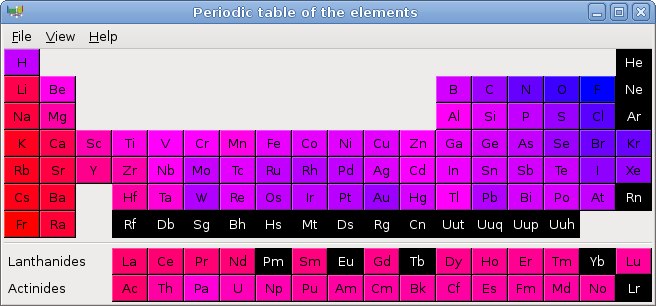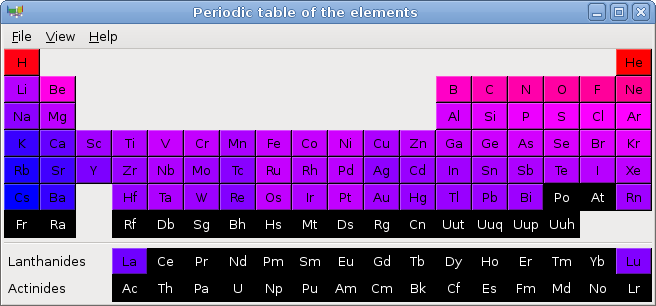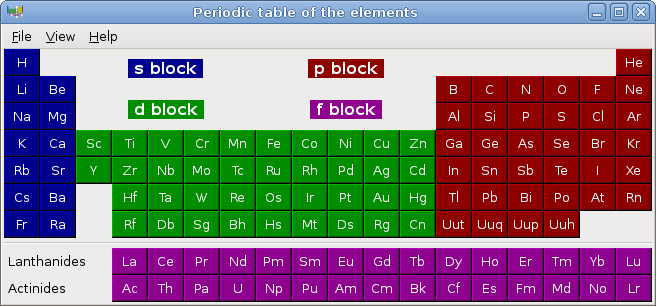Chapter 2. Usage
2.1. Color Schemes
Several color schemes are available:
- No colors
All buttons are grey.
- Default
Conventional colors are used.
- Physical state
The color of the button depends on the physical state (solid, liquid, or gas) of the element at a given temperature. This temperature can be changed using the horizontal scale.
Elements with a black background indicate that the state is unknown at the given temperature.
- Family
The data used are the element family as given in the Blue Obelisk Data Repository.
If a family is selected, only elements of this family will be displayed with their family color used as a background. Other elements will have a black background.
- Electronegativity
The data used are the Pauling electronegativity as given in the Blue Obelisk Data Repository. Colors go from red (lowest electronegativity) to blue (highest electronegativity). If no data is available in the database, the element will have a black background.
- Atomic radius
The data used are the atomic radii as given in the Blue Obelisk Data Repository. Colors go from red (lowest radius) to blue (largest radius). If no data is available in the database, the element will have a black background.
- Block
Elements buttons are colored according to the block (s, p, d, or f) to which the element belongs




